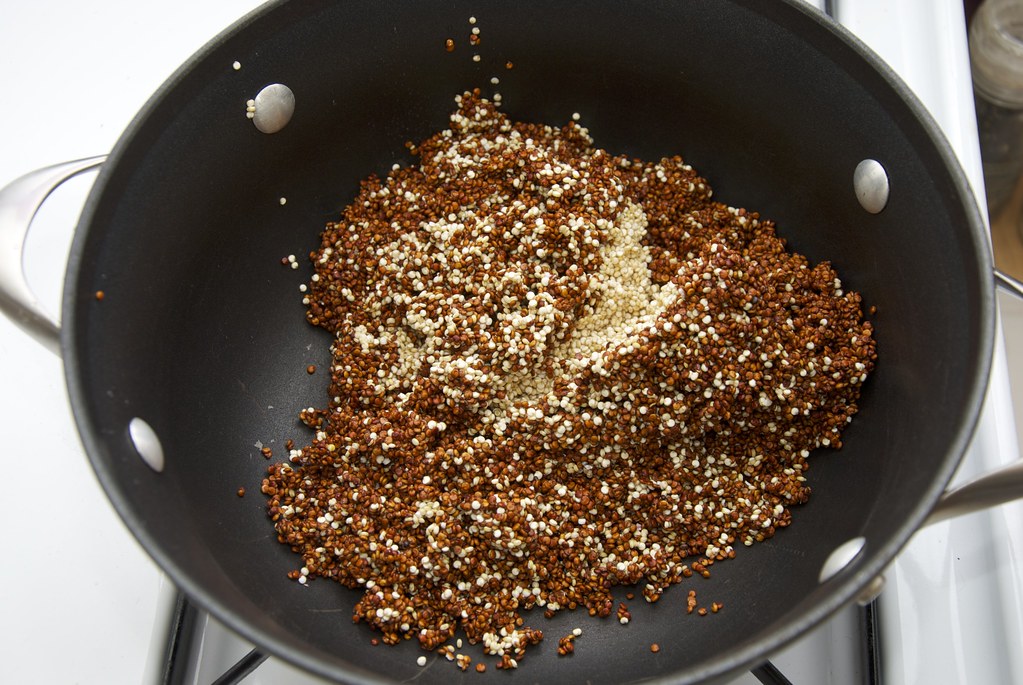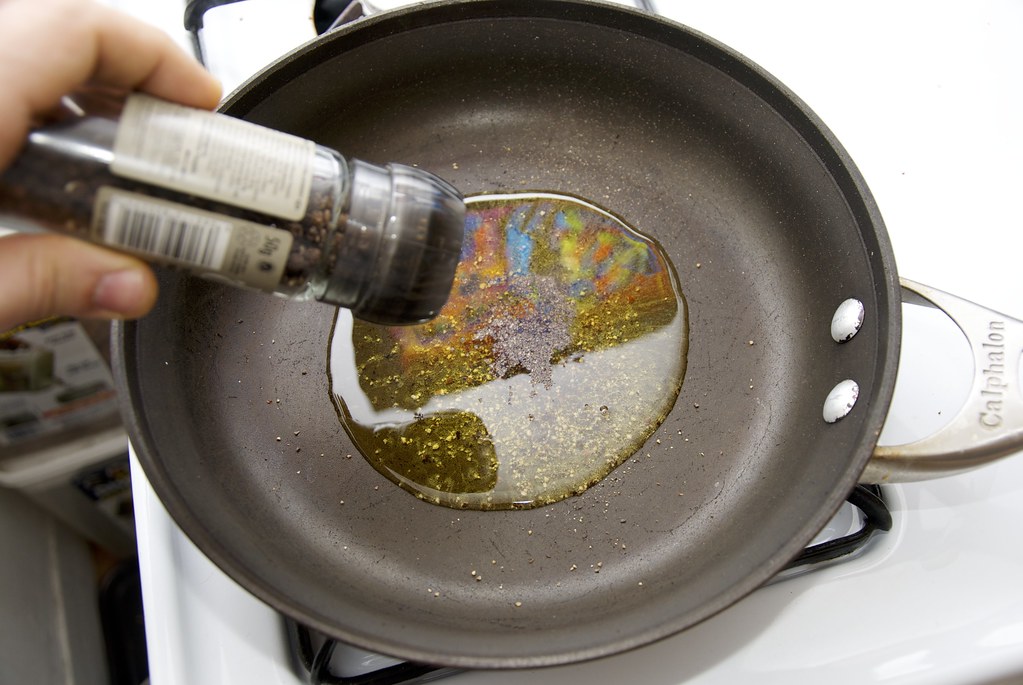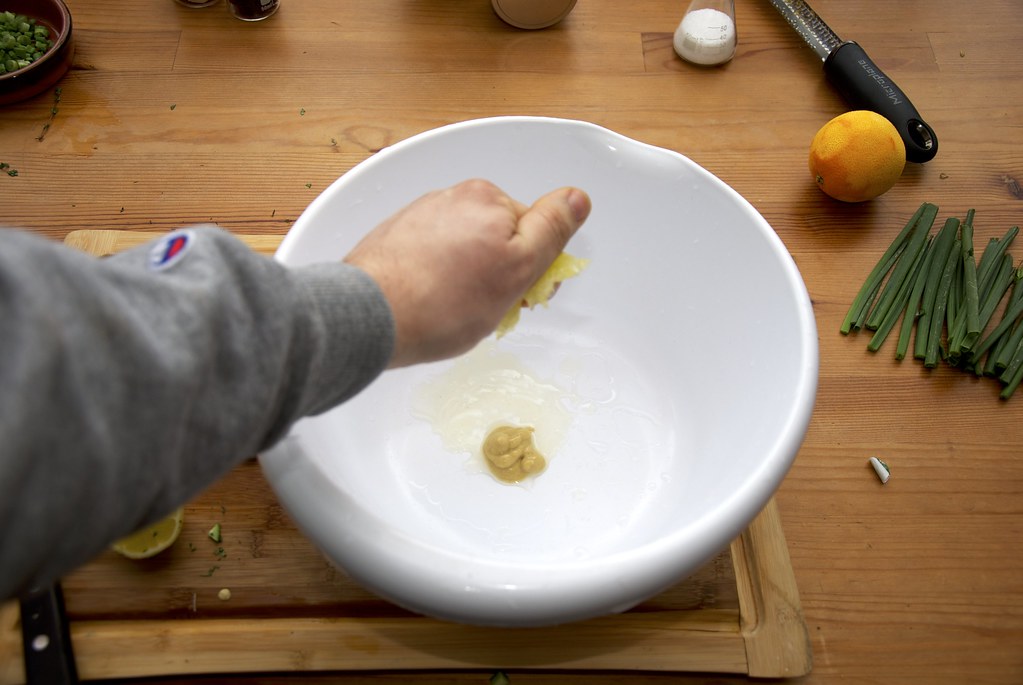
The last few years there is a growing number of grains that have hit the market. Many of them have been around for a while (a few thousand years) but their nutritional value was hardly been recognized. In their majority, they emerged as an alternative to the existing grains that recently have been under the gun for not being as healthy as we thought they were. A major concern is gluten. Gluten is a form of a tough network of proteins that are created by the cross-linking of gliadin and gluten with the help of water. Both gliadin and glutenin are in abundance in many grains, primarily in wheat, rye, and barley. Several people have an immunogenic response to it, in which the body recognizes several molecules (gliadin in this case) as an intruder. This is causing a cascade of effects that can lead to unpredictable results. This is considered part of the Celiac Disease and is not recognized as an allergy due to the unusual response of the body ranging from stomach cramps to joint pains.
One of the grains that have been used instead of wheat is Quinoa. Quinoa originated in the Andean region of Ecuador, Bolivia, Colombia, and Peru, where it was successfully domesticated 3,000 to 4,000 years ago for human consumption, though archaeological evidence shows a non-domesticated association with pastoral herding some 5,200 to 7,000 years ago. After harvest, the seeds must be processed to remove the coating containing the bitter-tasting saponins. Quinoa seeds are in general cooked the same way as rice and can be used in a wide range of dishes. A typical ratio is 1:2 Quinoa to water. Fresh quinoa leaves are also eaten as a leaf vegetable, much like amaranth, but the commercial availability of quinoa greens is limited. Quinoa may also be germinated in its raw form to boost its nutritional value, provided that the grains are first rinsed thoroughly to remove any saponin that may be present. Germination activates its natural enzymes and multiplies its vitamin content. This process, besides its nutritional enhancements, softens the seeds, making them suitable to be added to salads and other cold foods.
Quinoa was important to the diet of pre-Columbian Andean civilizations and too much of the modern American. Quinoa has been called a superfood due to the high protein content reaching up to 14% by mass, yet not as high as most beans and legumes. To put things in perspective we should mention that quinoa’s protein content per 100 calories is higher than brown rice, potatoes, barley, and millet, but is less than wild rice and oats. Nutritional evaluations of quinoa indicate that it is a source of complete protein, meaning that contains an adequate proportion of all nine of the essential amino acids necessary for the dietary needs of humans. Furthermore, it is a good source of dietary fiber and phosphorus and is high in magnesium and iron. Quinoa is also a source of calcium and thus is useful for vegans and those who are lactose intolerant. Actually, quinoa is being considered a possible crop in NASA’s Controlled Ecological Life Support System for long-duration human occupied spaceflights.
Since I don’t have any gluten intolerance I like quinoa for other reasons; its texture and taste. When it’s cooked properly quinoa becomes a nice al dente, firm little ball that pops to the bite. The taste is very saddle, nutty, and has hints of sesame. The plain taste is a great way to play with other flavors. It can soak up anything you like. From simple salad dressings to cooking juices. Although it comes to two different variations red and white, I find it very similar in taste. However, the red is more forgiving in terms of texture. I like to use a mix of the two, just for the contrast of colors. Here we are making a salad that will combine citrus and Mediterranean flavors to get a flavorful, light and aromatic dish, that can be used either as a side dish or as the main course.

The ingredients that we will be using are:
- 2 cups of quinoa (mix of red and white quinoa)
- 4 cups of water (1:2 cooking ratio)
- 1/4 cup of Olive oil
- Scallions
- Basil
- Orange (juice and zest)
- Lemon (juice and zest)
- 1/4 cup of dried cranberries
- 1/4 shelled pistachios
- 1 tbsp mustard
- Arugula
- Parsley
- Cumin
- Thyme
- Black pepper
- Salt

Add the quinoa in the colander. Quinoa has a thick shell that is bitter. Although it is removed, some of the bitterness remains so you need to rinse it off.

Follow it with the red quinoa.

Rinse it with a copious amount of cold water.

Strain and place in the pot.

Add the water.

Season with salt.

Cover and bring to a boil. Once you reach rolling boil take it down all the way down to low for simmering. You need to go low and slow so you don’t damage the structure and also let the water in the pot to be adsorbed and not evaporate.

The mean time lets go back to the rest of the ingredients.

Remove the roots from the scallions.

Chop them into small sections. Make sure you separate the green from the white part. The white part is quite sharp so I prefer to slightly cook it. The green part is nice decoration and offers an addition of color in the salad.

Then remove the lest from an orange. Microplane graters are best for this application.

Make sure to take only the orang part leaving the whit part (pith) behind.

Repeat with the lemon. I keep the lemon stationary and move the zester. This makes things a lot better.

Two naked citruses.

Now start with the parsley. Remove the stems and use the leaves only.

Chop then finely.

Do the same with the basil. (sorry this is out of focus). It’s kinda hard to chop and focus at the same time.

The thyme is a little different. Has very woody stems and a higher ratio of stems to leaves.

In this case, use your fingers as a pinch and pull the leaves to remove them from the stem.

And then chop them.

Mise en place: Herbs and zest, green part of the scallion, white part of the scallion.

Remove the ends.

Cut it in half.

split the halves in half and slice.
 By this time the quinoa is cooked. All the water is out and the grains are separated. Let the lid off for the steam to escape and wait till it is cool.
By this time the quinoa is cooked. All the water is out and the grains are separated. Let the lid off for the steam to escape and wait till it is cool.

The mean time add half of the oil in the pan.

Add some freshly ground pepper.

Follow that with cumin.

And through in a few springs of thyme. Let it there for a minute to fry and get all the aroma out to flavor the oil.

Add the white part of the scallion, and lower the heat.

Separate the stems of the thyme and remove them.

And add the oil and the scallion in the quinoa.

And very gently mix it. Don’t use too much force. You don’t want to mash the quinoa. If you are not very comfortable to use a pair of chopsticks.

Let the quinoa cool off. The meantime we can build the dressing.

Add some mustard.

The juice of the lemon.

And the juice of the orange.

Follow that with olive oil.

Mix to combine.

Add all the remaining items. Starting with the herbs and the zest.

Follow with the green onion.

And finally with the cucumber.

Mix everything well.

Add the quinoa.

Finally, add the cranberries. And let it for a couple of hours in the refrigerator. It will bring the flavors together and the warmth of the quinoa will help the absorption of the dressing, infusing the salad with flavor. I know we still have the arugula and the pistachio, but both get soggy if left in the salad. I like to add then at the end, just before serving.

Serve with the arugula and the pistachios. Decorate with some basil. Such a great dish.
Print
Quinoa Salad
-
 Prep Time: 30 mins
Prep Time: 30 mins -
 Cook Time: 35 mins
Cook Time: 35 mins -
 Total Time: 65 mins
Total Time: 65 mins -
 Yield: 8 cups
Yield: 8 cups -
 Category: Salads
Category: Salads -
 Method: Boiling
Method: Boiling -
 Cuisine: American
Cuisine: American
Description
A fresh and chewy salad, that can be also the main dish.
Ingredients
-
2 cups of quinoa (mix of red and white quinoa)
-
4 cups of water
-
1/4 cup of Olive oil
-
5 Scallions
-
1 basil sprig
-
1 Orange (juice and zest)
-
1 Lemon (juice and zest)
-
1 tbsp mustard
-
1/4 cup of dried cranberries
-
1/4 shelled pistachios
-
4 cups Arugula
-
1 tbsp Parsley
-
1 tsp Cumin
-
2 Thyme sprig
-
Black pepper
-
Salt
Instructions
- Wash and boil the quinoa over medium heat for 35 mins or until the water is absorbed.
- Chop and dice all the herbs and vegetables: cucumbers, scallions, parsley, and basil. Keep them separate.
- Juice and zest the orange and the lemon.
- Heat the oil over medium heat and toss in the thyme to flavor the oil.
- Add the onion to cook it down for 2 minutes.
- Add the hot oil in the quinoa and mix gently.
- Make the dressing by mix the mustard and the oil with the orange & lemon juice.
- Add the veggies, the zest, and the herbs.
- Add the quinoa and let it absorb the dressing.
- Serve chilled with the chopped pistachios and the arugula.
Notes
- As it is true with many recipes, the sky is the limit. Add the flavorings and spices you like.
- As a side dish is great next to pork or chicken.
- Use a pair of chopsticks to stir the quinoa so you won’t mush the grains
Nutrition
- Serving Size: 1 cup
- Calories: 257 kcal
- Sugar: 2.7 g
- Sodium: 322 mg
- Fat: 11.3 g
- Saturated Fat: 1.5 g
- Unsaturated Fat: 9.8 g
- Trans Fat: 0 g
- Carbohydrates: 32.5 g
- Fiber: 4.0 g
- Protein: 7.5 g
- Cholesterol: 0 mg
Keywords: salad, quinoa, fresh, gluten free











